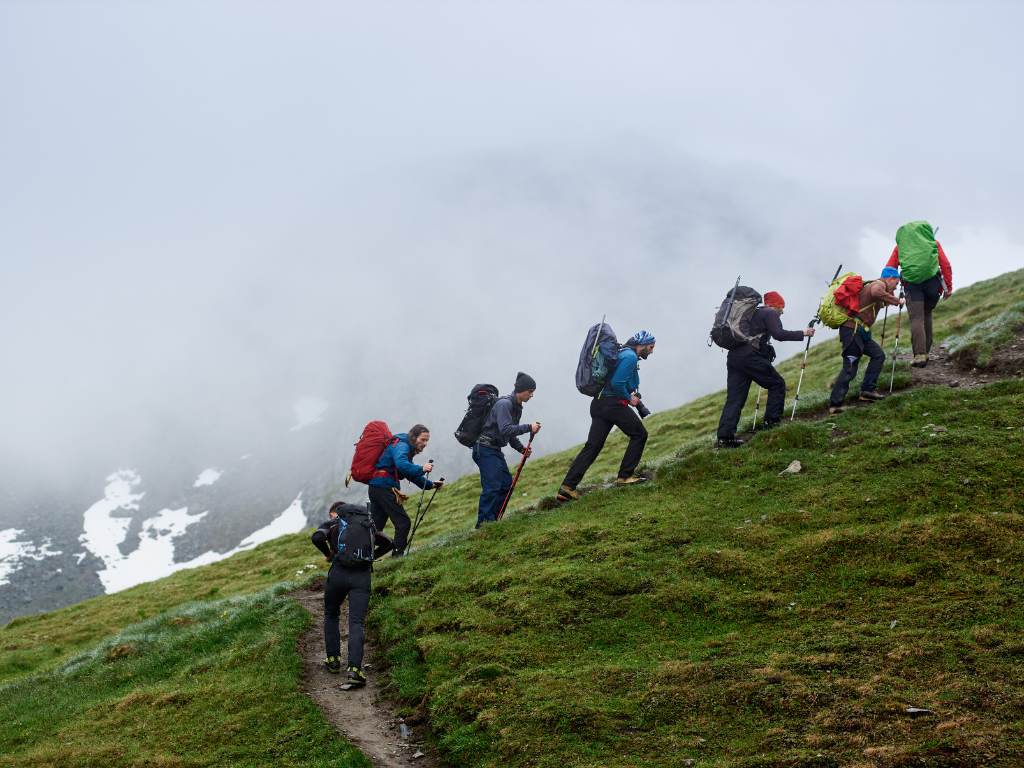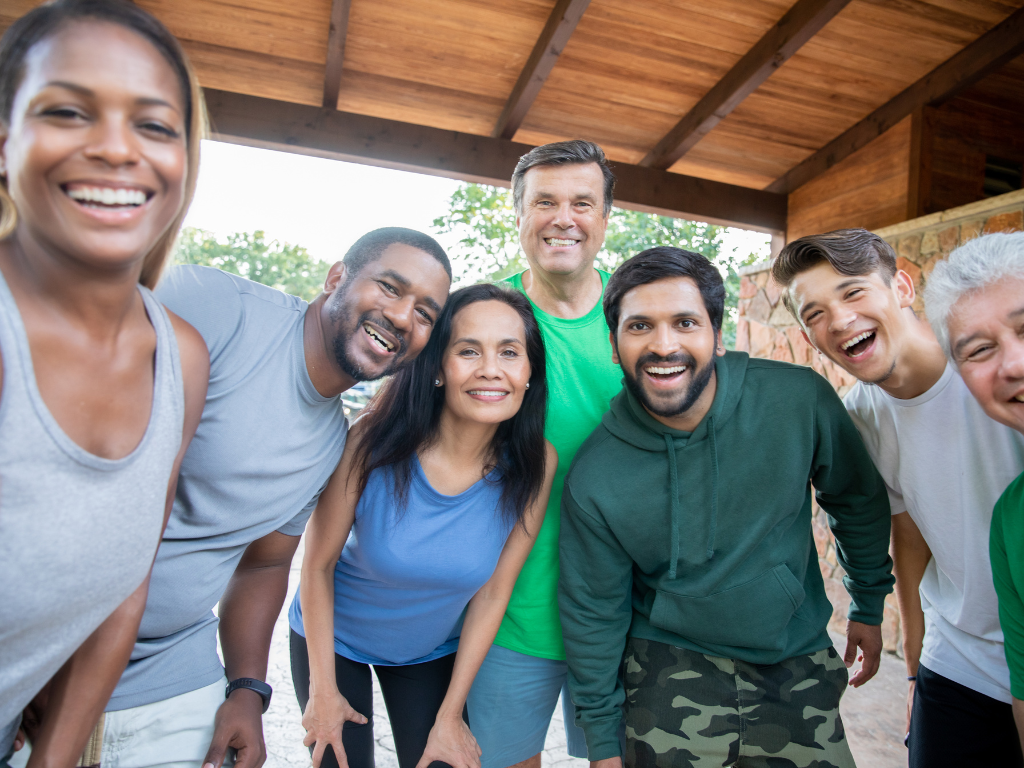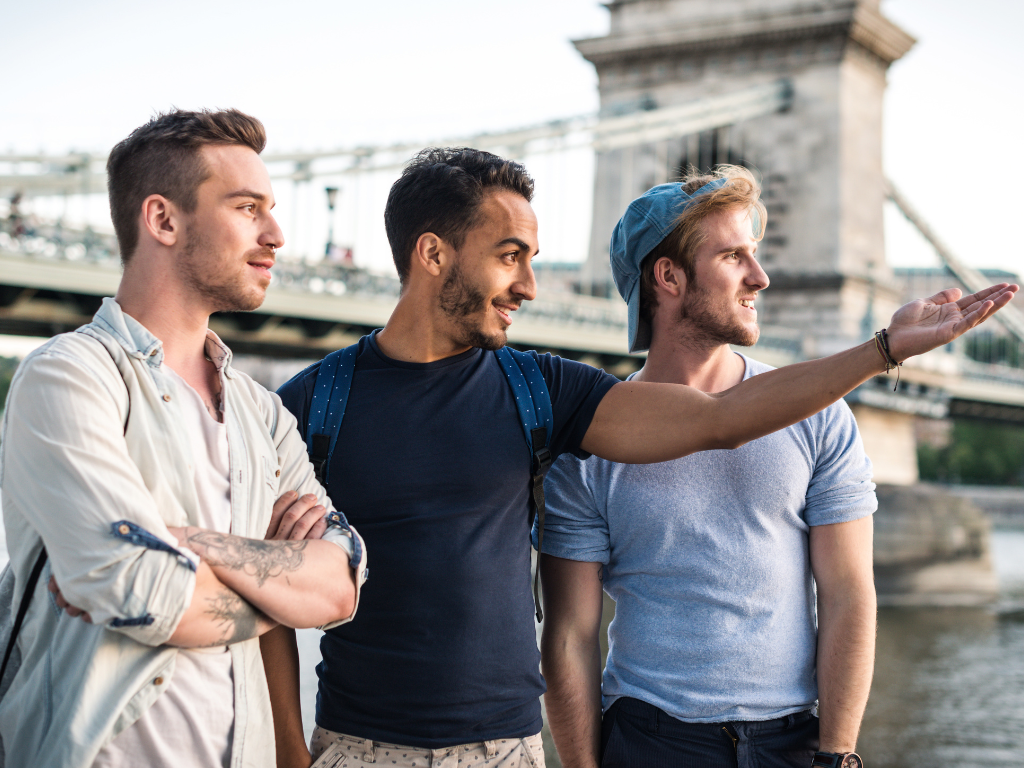Delivering Effective Safety Briefings to Participants
Crafting a memorable, value-packed briefing that keeps participants safe - and doesn’t get glossed over
On the first day of a trip or program, your program staff have a lot going on.
In addition to managing arrival, check-in, and orientation, they may be working directly with partners, vendors, and management. Not only are their soft skills at work, they’re also managing logistics, introducing themselves, establishing their role on the trip, and trying to help the group integrate and adjust to a new environment.
Somewhere along the way … they need to deliver a first-day safety briefing. It’s no wonder that these briefings are often glossed over, merely tolerated, or don’t happen at all.
But these briefings are critical for the safety of your programs.
Staff need tools and support to realistically deliver the required information in a memorable, clear, and value-rich manner. After all, there’s little point in delivering information to cover your liability if no one is paying attention.
Let’s address the challenge first - when and how the safety briefing can be delivered.
Safety Briefing Delivery
Your experienced leaders have been trained to set the tone on day one.
This includes painting a picture of the experience ahead, bringing the group together in shared excitement, and establishing roles within the context of the trip. When the group is feeling excited, it may seem like the last thing you want to do is interrupt with a droll safety talk that focuses on what could go wrong, might incite concern, or ends up completely ignored.
Here’s the thing - although it’s another task on the list of a busy program leader or trip leader, safety protocol must be delivered on the first day (and, as we’ll argue below, in sprints throughout the trip). It’s crucial to protecting the human lives in your group and living up to your organization’s values.
However, it doesn’t have to be long, dull, or take away from the delivery of your curated experience. In fact, it can be a foundational touchpoint that further endears your audience to your brand. Delivery of an impactful briefing can be critical to your success in keeping your participants safe, but also to establishing your organization’s credibility, values, and professionalism (your safety record might even be a big part of why they chose to travel with you).
Starting a Safety Briefing
Where to begin?
The safety briefing should be nestled in next to introductions and orientation. While it contains components directed from the legal team, you’ll also want to include guidance that speaks to the upcoming experiences.
To deliver the briefing most effectively, the staff member must engage the participants. Easier said than done. Who among us hasn’t sat back and started to read our books before the flight attendants finished their briefings? Or “zoned out” when the lifeguard delivers swimming basics at the pool? As humans, we naturally tune out select content. However, you want participants to engage in the conversation, remember the guidance, and understand why it’s there.*
*Fortunately (sort of), the COVID-19 pandemic has made participants hungry for health and safety information and they’ll likely be eager to learn about how they can protect themselves, their fellow travelers, and the communities they visit.*
So, what makes for memorable information? Storytelling and repetition.
Incorporating storytelling into your safety briefing - similarly to your trip descriptions, website copy, or marketing - provides a context for attention and memory.
Stay away from delivering cautionary tales or stories that double as fear tactics - this isn’t the tone you want to set at the beginning of the trip. Instead, try having staff deliver the story of the organization or their foray into the industry as part of the briefing introduction. Explain how what you do affects travelers and the host communities you visit. Connect how the safety of participants directly impacts your ability to make positive change, host epic adventures, or create impactful memories.
After all, if the flight attendant told you more about why you needed to pay attention and the impact of their training, you’d probably be a bit more inclined to pay attention to the safety briefing, right? (In fact, for airlines that now do video briefings, we see storylines incorporated frequently).
Here’s an example of an introduction to the safety briefing from a trip leader of a North American adventure operator. After hyping the group up and introducing themselves, they offered a personalized introduction to their formalized safety briefing:
“Now that the trip is officially about to begin, I want to share some health and safety guidelines with you. At [organization name], I’m excited to be in my fourth consecutive year of leading immersive trips. When the founders first formed [organization name] (bonus points if you can include some details about the founding story here), they could never have imagined we’d be able to connect world travelers with isolated host communities, stimulate economic growth for cities across North America, and empower travelers to take on new adventures like this. And what an adventure we are about to have!
Being able to facilitate meaningful travel for groups like you is a privilege and a responsibility that I don’t take lightly. In fact, [organization name] and I take it so seriously because we know our trips and our communities are made stronger by our impeccable safety record, which we owe thanks to responsible travelers (like you) and the policies which I am about to share with you.”
Covering the Basics
Now that you’ve got their attention, it’s time to deliver value-rich safety information to your participants.
It’s likely that some of your safety briefing is already set in stone or needs to be read word-for-word for legal purposes. An effective safety briefing will also touch on the following:
Taking care of oneself & environmental factors: Dressing for the weather, hydrating sufficiently, food considerations
Cultural and regional essentials - what to know about the environment
Daily routines and common items needed daily (ie, water bottles, bug spray, sunscreen, hats/sunglasses, masks)
Emergency numbers and who and when to contact for help
Water safety: For water-based activities as needed
Motorcoach, vehicle, or general transportation safety
Special activities safety: Canyoneering, hiking, backpacking, rafting, etc.
Group behavior and expectations: How groups should “move” together (especially relevant for students or in cities), communicating with leaders, being on time
Cultural appropriateness and context
While program or trip leaders may not have control over all the content delivered, the delivery itself can make all the difference. Staff should deliver the information with the following in mind:
Make guidelines clear: Don’t beat around the bush or “sugarcoat it.” If something is potentially dangerous or hazardous, use that language to describe it.
Bring meaning to each guideline: Provide reasons why each regulation is in place, even if it’s as simple as protecting the group.
Leave room for questions and engagement.
Embed additional briefings throughout the trip.
The End is not the End
Now onto the second factor: Repetition.
While the initial briefing is important, it’s also important to issue reminders along the way. This often happens naturally as vendors deliver their own briefings, but ensure that you’re providing reminders of safety concepts when they’re most critical.
Acknowledging that you know the safety information will be repetitive, but important, provides group context. In a quick poll of former trip and program leaders, we even found that some use creative ways to engage the group during safety talks:
“I publicly acknowledge that we are going to receive a lot of safety briefings during the trip. Everyone groans because they dread it. But the first day, I turn it into a shared experience by using a particular (silly) voice when I say “safety briefing” (I actually sing it). Every time we encounter a vendor who needs to give one, I introduce them and say “safety briefing” in that same voice. The group often laughs together, remembering our shared amusement, but then perks up - the laughter makes them pay attention!”
“During student trips, I use a variation of the “classroom clapping” strategy. I’ll ask the group to select a noise. It’s usually a weird noise that the kids enjoy making. I use this throughout the trip whenever I want them to listen or tune into a speaker issuing information or a safety briefing. I ask them to make our group noise - which they’re all excited to do - and they know that means they need to be engaged and listen in.”
“For adult tours, I’ll often ask the group for “favors.” One of these “favors” is for them to listen to all the safety briefings or instructions delivered by various vendors throughout the trip. I tell them I’m trying to improve my craft and ask if they would please listen and let me know at the end of the trip if there’s anything I missed in my initial safety briefing. People love feeling like their opinion matters and I find that they often forget why they’re listening so intently to the messaging from vendors - but at least they’re listening!”
In Conclusion
Perhaps this seems like overkill on a program where program leaders are managing many logistics. However, we hope you’ll take the time this year to consider how the briefing and safety information is delivered throughout your trips:
Rather than rush through it, is there a way to make it more impactful and result in fewer incidents?
How can you help bring the group closer together through shared responsibility for safety?
Does the safety training and delivery training for your staff help them professionally develop and emphasize your brand story and values?
And with the briefing fully explored, onto the adventure!
Written by Community Director, Madeline Willett with collaboration from former program/trip leaders.
Need help training staff or crafting the right briefing or risk management plans? Reach out and let us know!





